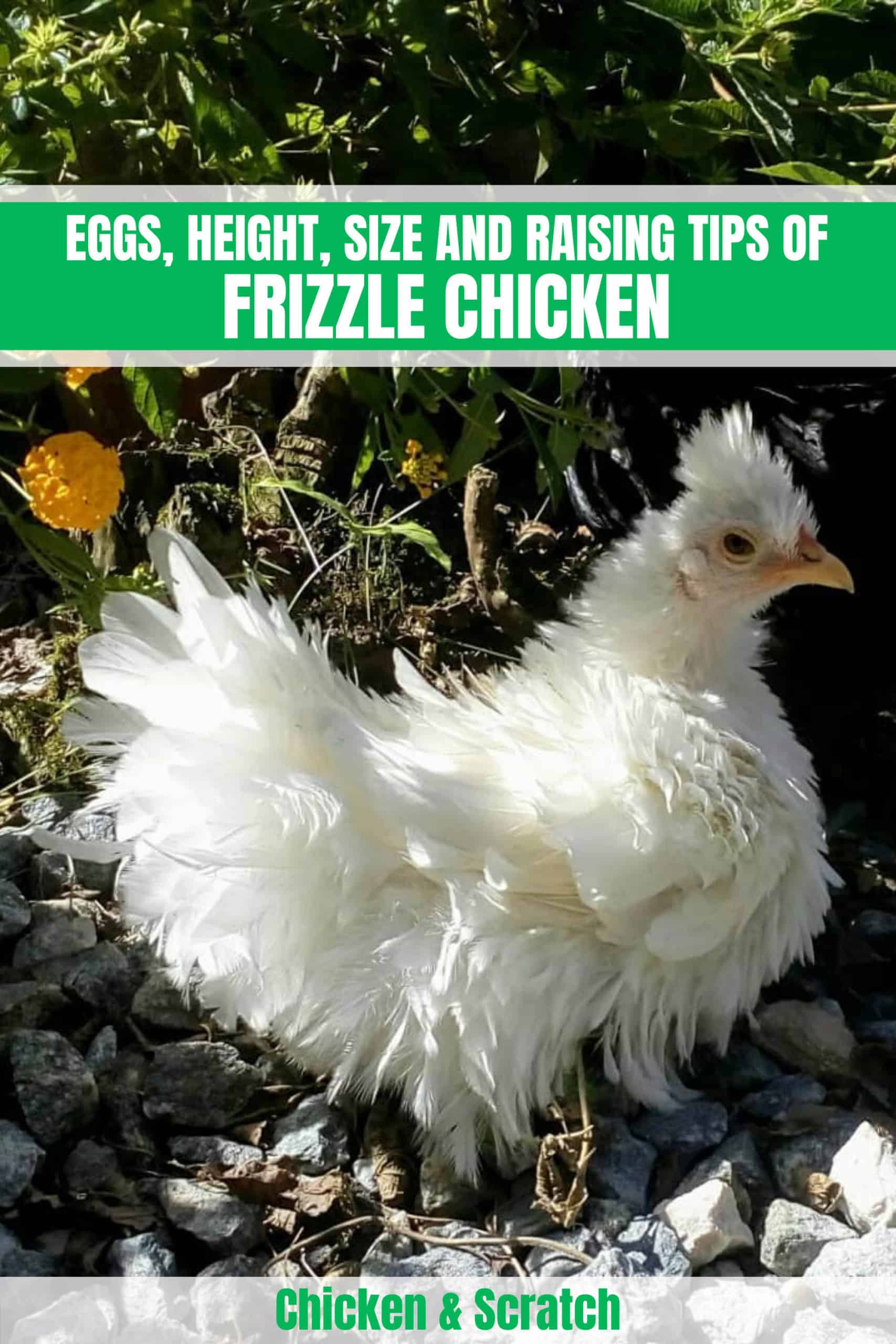Frizzle chickens are known for their unique look compared to other chickens. They have been around since the 1600s and have become a popular show animal in the present time.
Those that want to raise a Frizzle should take note of their health issues, diet, and shelter before making the final decision.

Background and History of Frizzle Chickens
The Frizzle chicken is a dual-purpose breed. It has curled or “frizzled” feathers that curl backward from the chicken’s head. The Frizzle isn’t a new breed of chicken. They were first mentioned in the early 1600s.
Charles Darwin called them “Caffie Fowl”. Darwin never physically visited India himself. However, he documented them as originating from India.
There aren’t any written records of their precise origins, but they’re said to have come from Asia, East Indies, and China. Since the nineteenth century, it’s been reported that the Frizzle gene originated from the Far East. The “mf” gene is responsible for the unique feathering the Frizzle has.
Later, Western countries got wind of their unique looks and began importing them. Now, they are a relatively popular type of chicken in the United States. They’re more of an exhibition animal than your typical hen that just lays eggs.
However, they can breed and produce eggs like the breeds of domesticated chickens. They also make good table birds. When they are in a show, they are judged by the standards of the breed they originated from.
Frizzle Chicken Breed Standard
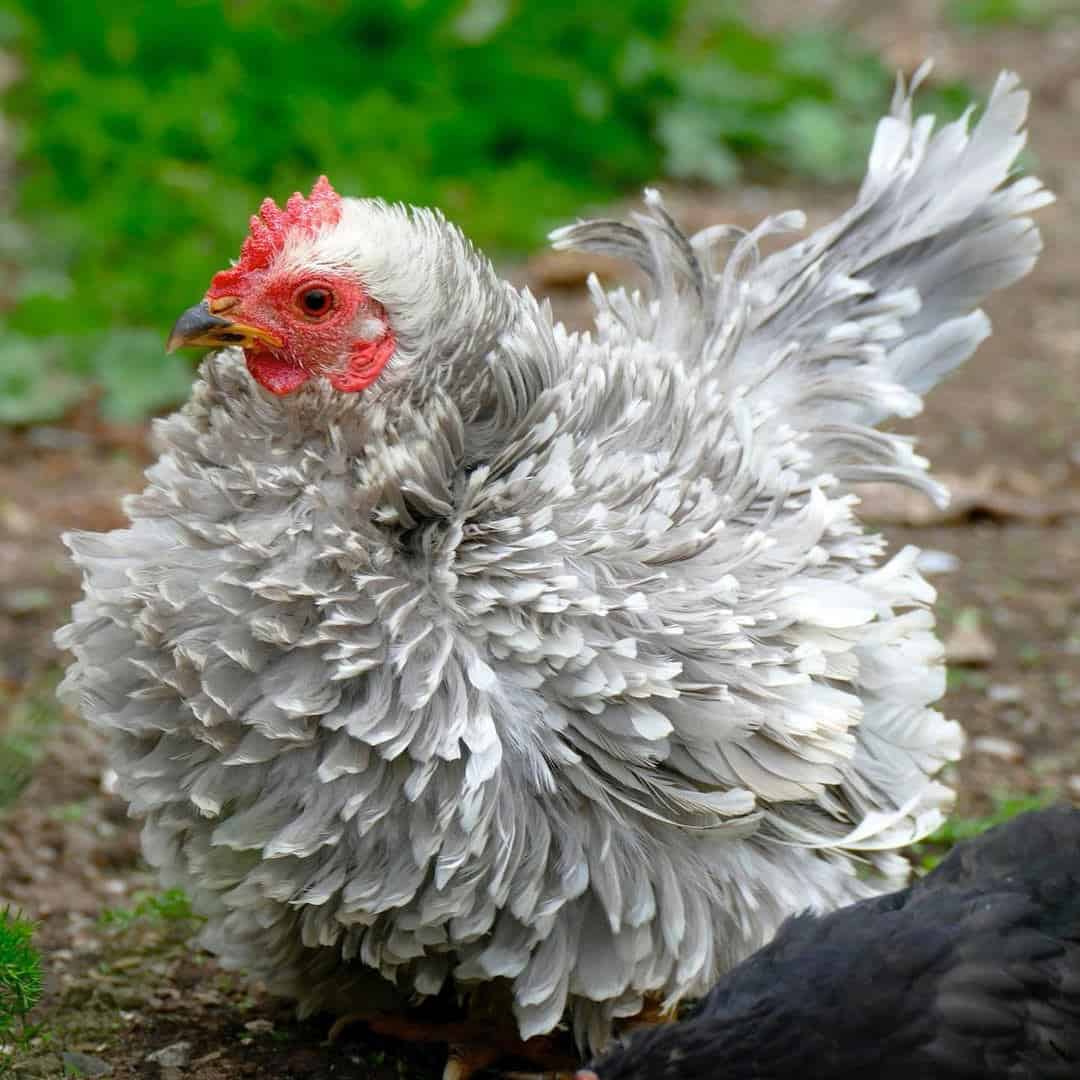
Frizzles are hardy and classified as a heavy breed. Frizzles are known for their unique curly feathers. The feathers curl upward and outward from their body. This is different compared to normal feathers that lay against the body.
This happens because of a genetic mutation in the gene pool through a gene called “mf.” Frizzles can have various types of color in their feathers, but it’s based on their breed. For example, if you breed a Frizzle with a Cochin, it will have a full feathered body, even at its feet! It can range in color from black, white, or red.
Ten countries recognize the Frizzle chicken as a distinct breed. The United States only considers them to be a type of chicken, not a breed. The frizzling “mf” gene appears in various breeds of chickens, so that’s why they only consider it a type.
It’s important to note that breeding a Frizzle with another Frizzle can result in a Frazzle. There is a 25% chance that you will end up breeding one, but it’s better to avoid mating them if you can.
Breeding Frazzles is not recommended. This is because they tend to have many health problems such as loss of feathers and heart issues.
There are several breeds of chicken that have Frizzles. Cochins, Silkies, Orpingtons, Plymouth Rocks, Japanese Bantams, and Polish Bantams are Frizzle chickens.
Each breed exhibits several diverse characteristics that distinguish them from the other. This ranges from their temperament, egg-laying, size, and colors. While they are commonly known for being show animals, they can still lay eggs.
Frizzle Chicken Personality and Temperament
Frizzle chickens, in general, are a friendly and gentle breed. However, each breed does have its quirks.
- Cochin – The most popular breed of Frizzles for new owners. They enjoy being around humans, easy to handle and make for great pets. Fostering for hatching and brooding is also something they are ideal for. Cochins weigh anywhere from two to five pounds.
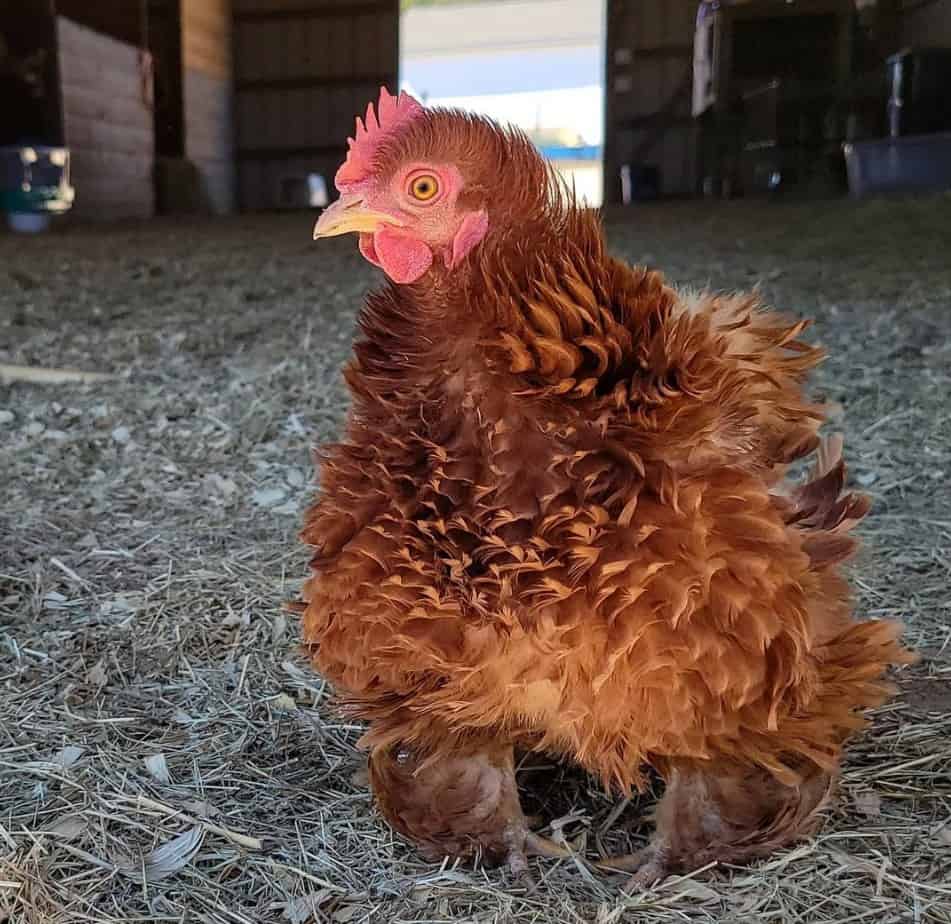
- The Plymouth Rock – Both the roosters and the hens are generally friendly and calm. The roosters tend to be good protectors and don’t display aggression for people. They also are inquisitive and prefer to be free ranged but containing them won’t cause a stir.
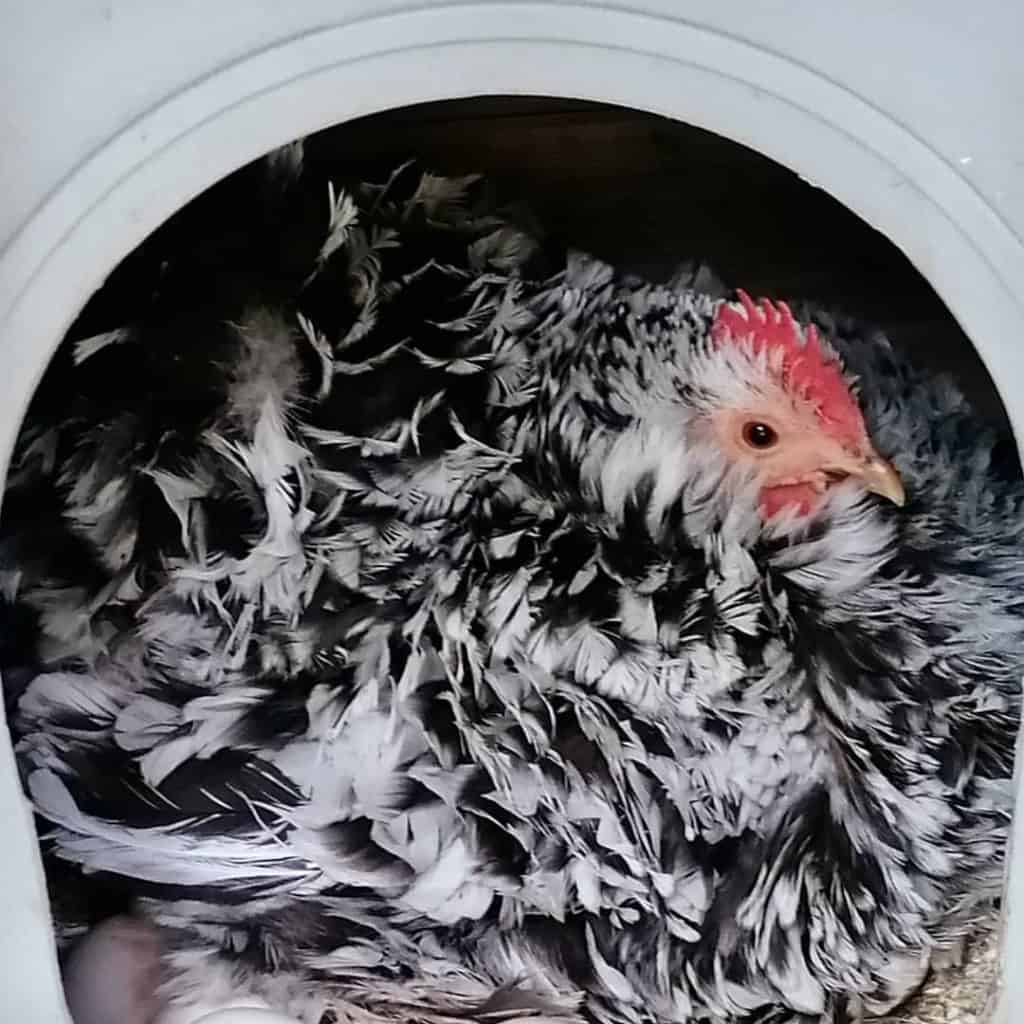
- Silkies – Silkies have easy-going personalities and make good pets. The roosters are docile as well. This can lead to them getting “bullied” by other chickens. It’s best to keep them around breeds with a similar nature.

- Japanese Bantam – They are tame and make for great pets because of their friendly nature. The Japanese Bantam doesn’t mind being confined indoors for its entire lifespan.
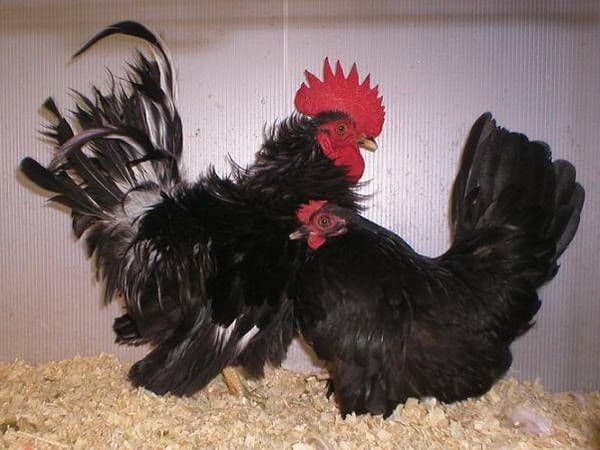
- Polish Bantam – Polish Bantams are gentle and don’t mind affection such as holding or cuddling. They deal with confinement well. It’s recommended to keep them penned because of their poor eyesight and curious nature.
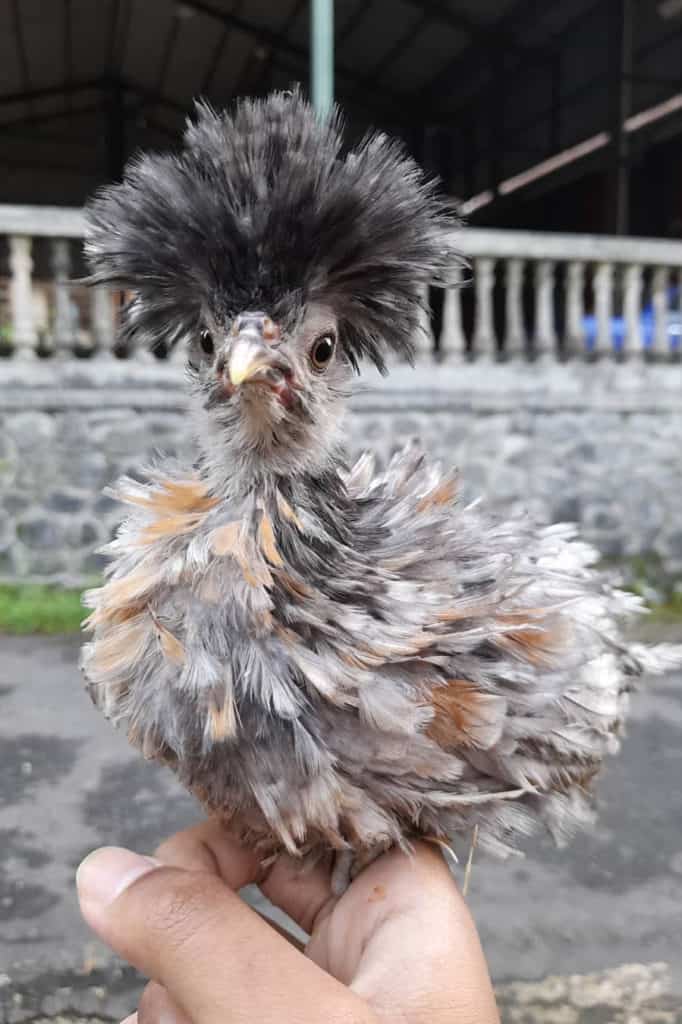
- Orpington – Orpingtons are ideal for small farms because of their docile and sweet nature. The hens tend to be broody easily, hardy, and grow quite large.

Frizzle Chicken Egg Laying
The Frizzle chicken’s egg-laying will vary depending on their breed.
- Cochins – Cochins are not the best egg layers. On average, they’ll lay 180—200 eggs in a single year. They lay their eggs in the winter months. The eggs are small to medium-sized and are brown.
- Silkies – Silkies lay about three eggs per week and about 120 eggs per year on average. They start their egg-laying around January which is earlier than most hens. The eggs are small to medium in size and are cream-colored.
- Japanese Bantam – This breed is the worst when it comes to egg-laying. The hens only produce around one egg per week. The eggs are small, and the color varies between brown and cream-colored.
- Plymouth Rock – This breed does its best egg-laying in the first three years of life and then it declines. They can lay up to age 10. On average, they lay 200 eggs per year or four per week. The eggs are large and brown.
- Polish Bantam – Polish Bantams lay around 200 eggs on average per year. They do need time to get used to laying eggs before they can produce consistent amounts.
- Orpington – The hens lay around three to four eggs per week on average. The eggs are large and light brown.
Health Issues and Care
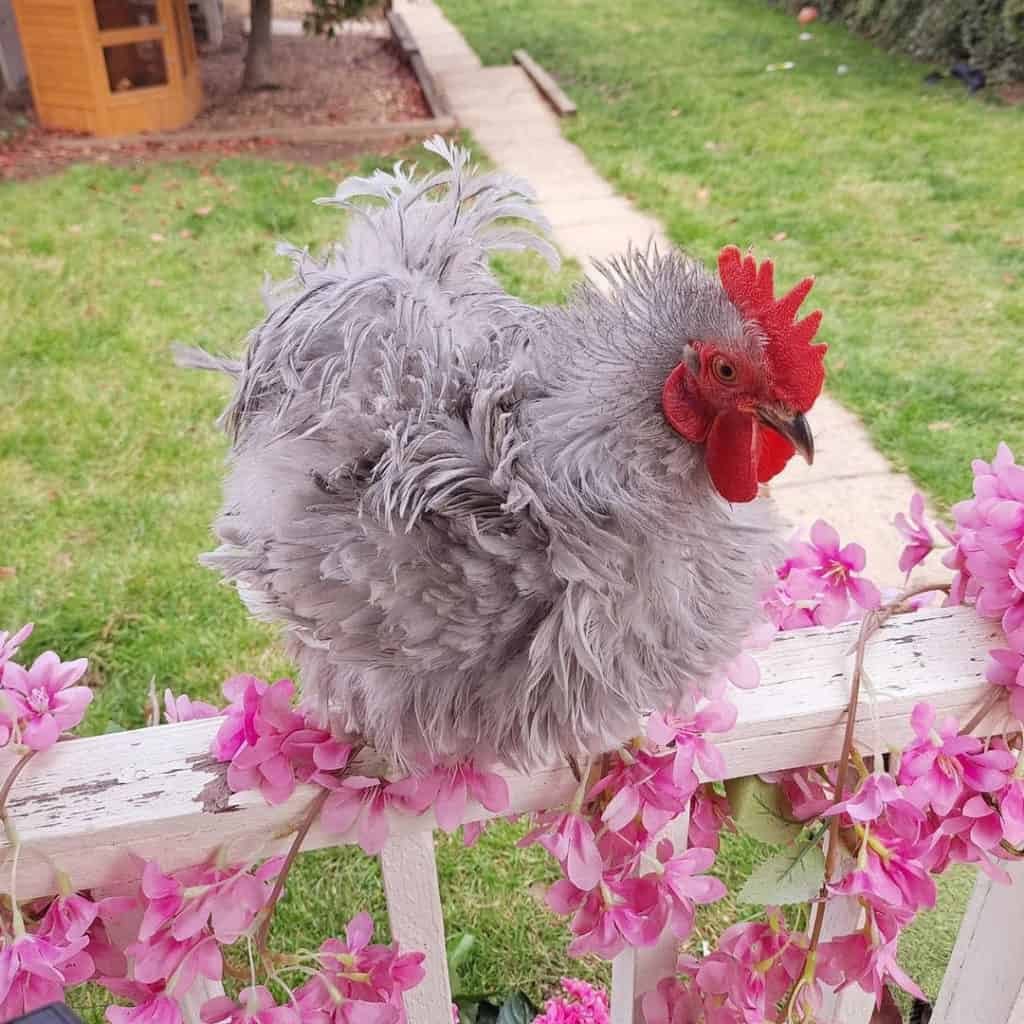
Frizzles can suffer from some health complications. These complications shouldn’t be taken lightly, and it’s best to see a veterinarian right away. Failure to treat these issues can result in death. The most common health issues they suffer from are as follows.
- Intestinal Parasites
- Egg binding or Vent Prolapse
- Mites or lice
Chickens, in general, need to be cared for in a proper environment. Frizzles are susceptible to parasites, worms, lice, and mice. It’s recommended that you feed them crushed garlic and apple cider vinegar.
This will help keep their immune system healthy and ward off any parasites. If your chicken does develop an issue, seek a veterinarian.
If you end up having a Frazzle, they suffer from a list of their health issues. They often suffer from balding, heart problems, organ problems, physical deformities, and often a short life span. Avoid breeding a Frizzle with a Frizzle to eliminate the chance of getting a Frazzle.
Keep in mind that vaccinating your chickens will also lower the risk of illnesses.
3 Tips for Raising a Frizzle

Frizzles need as much care and attention as a regular chicken. They can have preferences and personality quirks that will require them to have certain living conditions and care. This will vary based on their breed. Below are three tips for raising a Frizzle.
1. Shelter
Frizzles generally can be either confined or free-range. While some breeds prefer the outdoors, it’s not required. It’s recommended to confine them to lower the risk of illness and to help keep them safe from predators.
Depending on where you live, sheltering may be the better option. Frizzles are hardy so cold weather won’t bother them too much, but they do need to be protected from wetness.
Keep in mind when building that you will want easy cleaning access and space. Frizzles are a heavy breed so they will need adequate space.
2. Feeding

Frizzles don’t require any specific diets or special food. However, that doesn’t mean you should give them just any type of chicken feed. Feeding them high-quality foods that have nutrients will help with their immune system. It will also promote growth and production.
Since Frizzles can be raised either confined or free-ranged, the feed can vary. Raising your chickens to be free ranged can lower your food cost and if you own a farm, it’s better for your land. This does come with risks, though. Predation and poor weather conditions can impact your chicken’s health.
Water should always be clean and fresh. The amount of water they will need will depend on the chicken itself. Be sure to keep refilling water as it gets low.
3. Breeding
The Frizzle is like any other domesticated chicken in that they’re easy to breed. They will produce enough eggs to be fertilized if you have the proper number of roosters and hens. The general rule of thumb is for every ten hens to have one rooster.
Summary
Frizzles are a great addition to your farm. They’re a friendly and docile breed that doesn’t need different care from that of other domesticated chickens.
They can lay eggs but are more show animals than anything else because of their unique look. However, they can suffer from health issues if not bred properly. Speaking to experienced breeders can guide you.
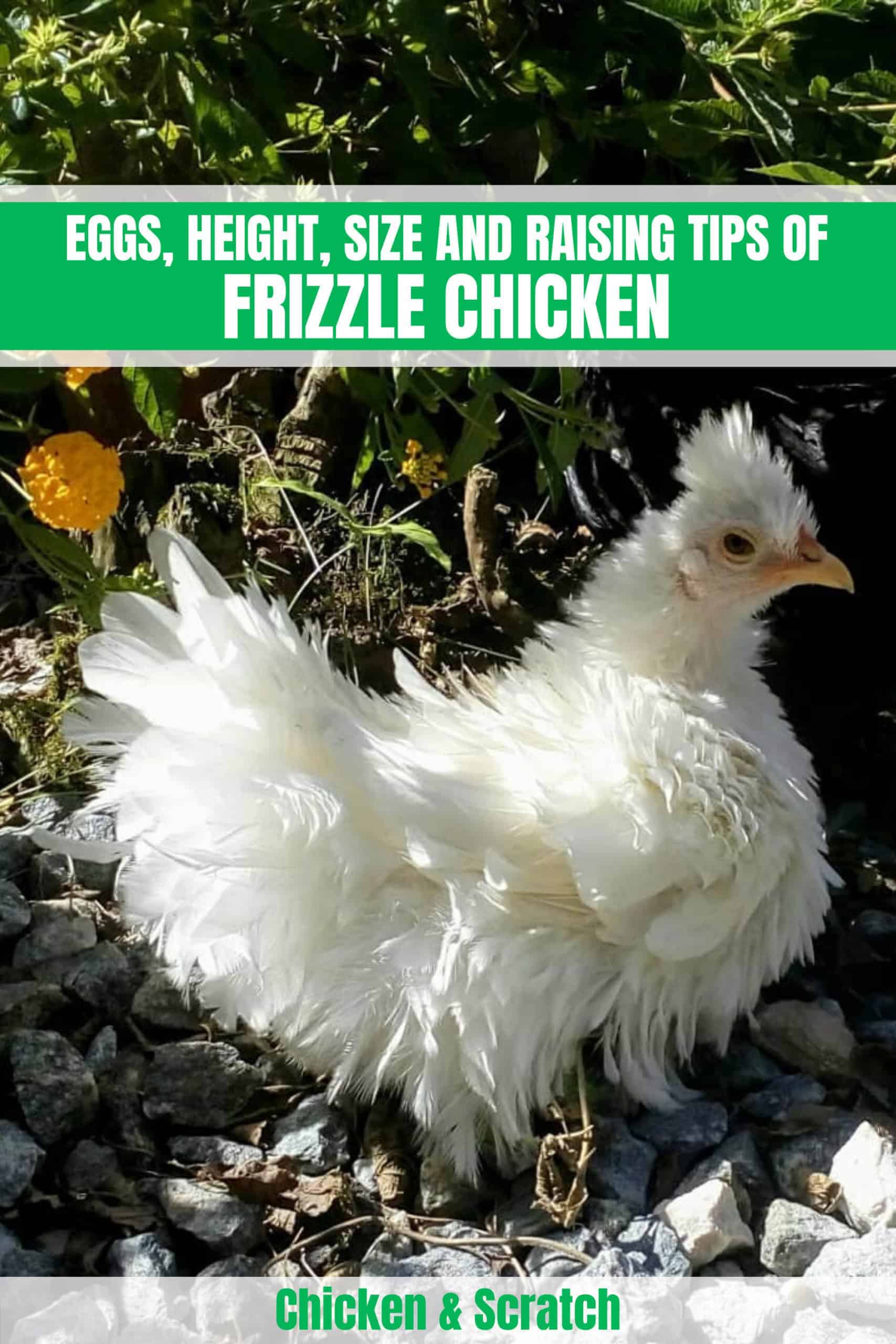

Joseph Hudson has been raising chickens for over 15 years. In 2018, he completed the Agriculture & Natural Resources program at Mt. San Antonio College. He currently raises over 1400 chickens on his 7.5-hectare farm. He keeps sharing his experience on raising healthy and happy chickens on Chicken Scratch The Foundry.
